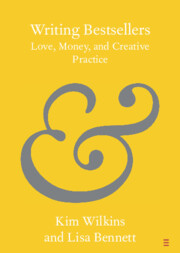Element contents
Writing Bestsellers
Published online by Cambridge University Press: 23 September 2021
Summary
- Type
- Element
- Information
- Online ISBN: 9781108663724Publisher: Cambridge University PressPrint publication: 21 October 2021
Bibliography
- 3
- Cited by



